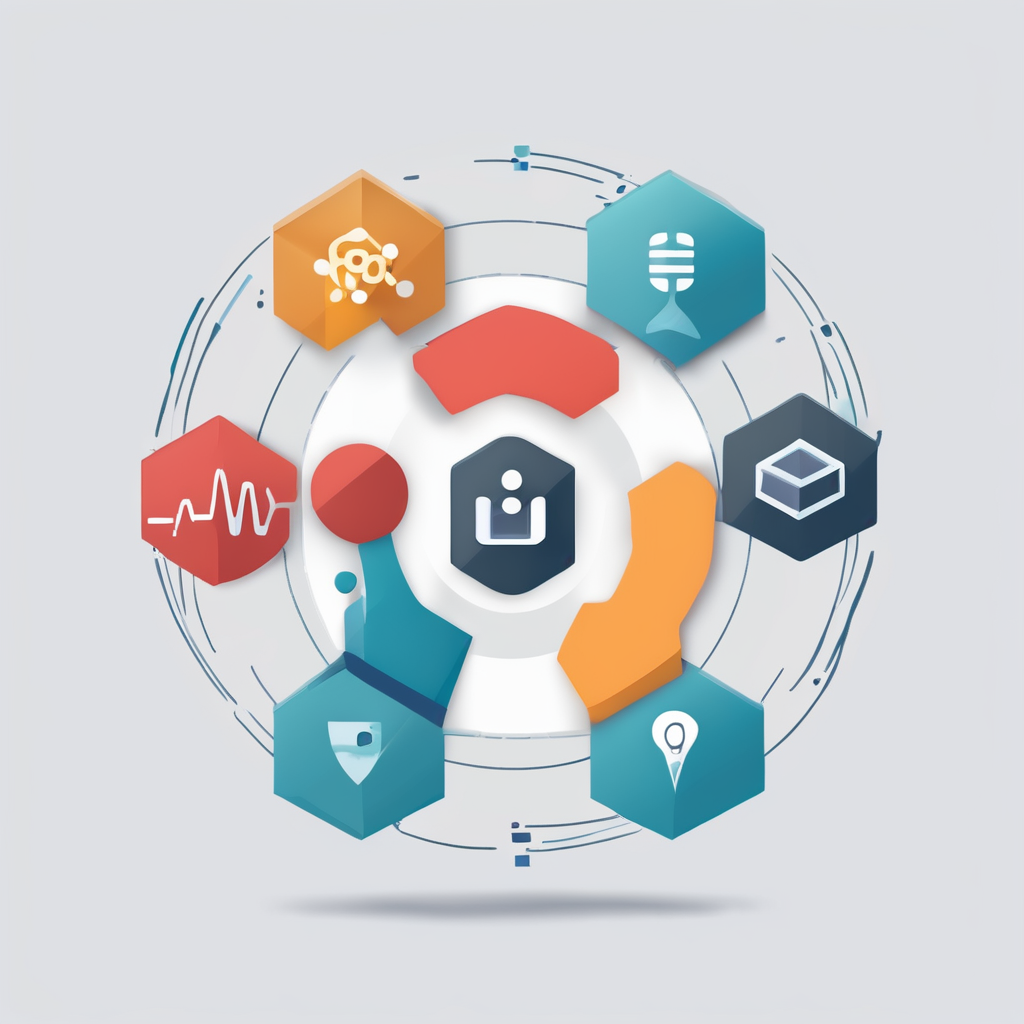Unlocking Global Expansion: Essential Scalability Strategies for UK SaaS Providers
As the SaaS industry continues to grow at an unprecedented rate, UK-based SaaS companies are increasingly looking to expand their reach beyond national borders. However, navigating the complexities of global expansion can be daunting. Here, we will delve into the essential scalability strategies that UK SaaS providers need to adopt to successfully enter and thrive in new international markets.
Understanding the Global Market Landscape
Before diving into the strategies, it’s crucial to understand the global market landscape and the opportunities it presents. The global SaaS market is projected to exceed $700 billion by 2024, driven by the increasing demand for cloud-based services and the need for digital transformation across various industries[2].
In parallel : Enhancing customer loyalty: cutting-edge ai tactics for e-commerce success in the uk
Key Market Trends
- Cloud Computing: The cloud computing market is expected to reach $1,266.4 billion by 2028, with serverless computing, hybrid, and multi-cloud environments becoming more prevalent[2].
- Cybersecurity: With the rise in cybercrime, companies are focusing on consolidating their software tools to reduce the attack surface and enhance security[2].
- AI and Automation: The use of AI in software development, project management, and customer support is on the rise, with at least 30% of automation initiatives expected to involve AI by the end of 2024[2].
Building a Scalable Business Model
A scalable business model is the foundation of any successful global expansion. Here are some key elements to consider:
Product Development
- Modular Architecture: Design your SaaS product with a modular architecture that allows for easy integration and customization for different markets.
- Cloud-Native: Develop cloud-native applications to leverage the scalability and flexibility of cloud computing. This includes adopting serverless computing to reduce the burden on developers and enhance cost efficiency[2].
Customer Support
- Global Support Infrastructure: Establish a robust customer support infrastructure that can handle queries from different time zones and languages. This might involve setting up regional support centers or leveraging AI-powered chatbots.
- Localized Support: Provide localized support by hiring staff who understand the cultural and linguistic nuances of the target markets.
Financial Planning
- Flexible Pricing Models: Implement flexible pricing models that cater to the economic conditions of different regions. This could include tiered pricing, subscription models, or even free trials to attract new customers.
- Currency and Payment Options: Offer multiple currency and payment options to facilitate easy transactions for international customers.
Leveraging Technology for Scalability
Technology plays a critical role in scaling SaaS businesses. Here are some technologies and strategies that can help:
In parallel : Unlocking Consumer Insights: Top Machine Learning Techniques for Predicting Shopping Patterns in the UK Retail Industry
AI and Automation
- AI-Powered Tools: Use AI-powered tools like ClickUp to streamline operations, generate product ideas, create roadmaps, and automate tasks. These tools can also help in transcribing conversations, summarizing long documents, and more[2].
- No-Code Development: Adopt no-code development platforms to speed up the development process and reduce the dependency on skilled developers.
Cloud Services
- Hybrid and Multi-Cloud Environments: Utilize hybrid and multi-cloud environments to optimize resource allocation, reduce redundancy, and improve resilience. This approach allows companies to select the best cloud services for specific workloads[2].
Marketing and Sales Strategies
Effective marketing and sales strategies are crucial for acquiring and retaining customers in new markets.
Localized Marketing
- Understand Local Markets: Conduct thorough market research to understand the local culture, preferences, and pain points. This will help in tailoring your marketing messages and product offerings.
- Regional Campaigns: Launch regional campaigns that are customized for each market. For example, Koodo Mobile successfully reduced its customer acquisition costs by 167% through a referral program tailored for the Canadian market[3].
Sales Channels
- Partnerships and Collaborations: Form partnerships with local businesses and organizations to expand your reach. For instance, Orange has strengthened its partnership with Google Cloud to deploy AI and cloud services across 26 countries[4].
- Digital Marketing: Leverage digital marketing channels such as social media, email marketing, and content marketing to reach a wider audience.
Customer Acquisition and Retention
Acquiring and retaining customers is a continuous process in the SaaS industry.
Customer Referral Programs
- Implement Referral Programs: Implement referral programs that incentivize existing customers to refer new customers. For example, Tesla’s referral program offers rewards to both the referrer and the new customer, which has significantly boosted their customer acquisition[3].
- Loyalty Programs: Develop loyalty programs that reward long-term customers and encourage them to continue using your services.
User Experience
- Personalized Experience: Provide a personalized user experience by offering customized features and support. Use data analytics to understand user behavior and preferences.
- Continuous Feedback: Collect continuous feedback from customers to improve the product and address any issues promptly.
Table: Comparing Key Strategies for Global Expansion
| Strategy | Description | Benefits | Challenges |
|---|---|---|---|
| Modular Architecture | Designing the SaaS product with a modular architecture | Easy integration and customization | Higher initial development costs |
| Cloud-Native Development | Developing cloud-native applications | Scalability, flexibility, and cost efficiency | Requires skilled developers |
| AI and Automation | Using AI-powered tools for operations and development | Streamlined operations, faster development | Dependence on AI technology, potential security risks |
| Hybrid and Multi-Cloud Environments | Utilizing hybrid and multi-cloud environments | Optimized resource allocation, improved resilience | Complexity in managing multiple cloud services |
| Localized Marketing | Conducting market research and tailoring marketing messages | Better market penetration, higher customer engagement | Higher costs for market research and customization |
| Referral Programs | Implementing referral programs to incentivize customer referrals | Increased customer acquisition, reduced acquisition costs | Managing and rewarding referrals can be complex |
| Personalized User Experience | Providing a personalized user experience through customized features and support | Higher customer satisfaction, increased retention | Requires robust data analytics and continuous feedback |
Practical Insights and Actionable Advice
Here are some practical insights and actionable advice for UK SaaS providers looking to expand globally:
Start Small
- Begin with a few key markets and gradually expand. This will help you refine your strategies and address any issues before scaling up.
Be Adaptable
- Be prepared to adapt your product and marketing strategies based on feedback from new markets. Flexibility is key in global expansion.
Invest in Local Talent
- Hire local talent who understand the market nuances. This will help in providing better customer support and tailoring your product offerings.
Focus on Customer Support
- Invest heavily in customer support infrastructure. Happy customers are more likely to refer your product to others, which is crucial for organic growth.
Leverage Technology
- Use the latest technologies such as AI, cloud computing, and no-code development to streamline your operations and speed up your development process.
Global expansion is a complex but rewarding journey for UK SaaS providers. By understanding the global market landscape, building a scalable business model, leveraging technology, and implementing effective marketing and sales strategies, companies can successfully navigate the challenges of entering new international markets.
As Decathlon’s approach to AI deployment highlights, “the deployment of AI is perceived as an industrial challenge” that requires a structured and flexible protocol to favor the deployment of useful algorithms in production[4]. Similarly, UK SaaS companies must adopt a structured approach to global expansion, focusing on scalability, customer experience, and continuous innovation.
In the words of Eric Avidon from TechTarget, “the third wave of analytics, which involves revisiting the platform to incorporate generative AI, is on the horizon”[4]. This underscores the importance of staying ahead of the curve in terms of technology and market trends.
By following these strategies and staying adaptable, UK SaaS companies can unlock new markets, drive growth, and establish themselves as global leaders in the SaaS industry.











